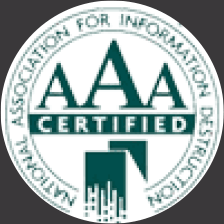
Did you know the average American office worker uses 10,000 sheets of paper every year? Now multiply that by the number of employees you have. The result might be staggering.
What are people printing? Many print emails or other documents. You’ll also want to keep paper copies of contracts, financial records, and more.
Even the most innocuous email can contain sensitive information, though. It should be clear why every organization needs a paper shredding business plan.
The Importance of a Paper Shredding Business Plan
With so much paper flying around the office, it’s clear why a document shredding business plan is important. You want to keep sensitive information from falling into the wrong hands.
More than that, you often have a legal responsibility to protect any sensitive data you have on hand. That might mean records that include employees’ names, addresses, and social security numbers.
It can also include paper records that have customer information. Just as you need to take precautions to protect digital data, you must also protect anything on hard copy. In the medical field, patient files must also be protected. Documents like legal contracts and financial reports may also have sensitive information. A printed email could leak proprietary information or contact information.
Clearly, it’s important to make sure any paper documents you have are being handled the right way. Shredding business documents is the best way to make sure this data stays safe.
The Components of a Good Document Shredding Business Plan
Now that you can see the importance of destroying paper business records the right way, it’s time to develop a plan. So, what does a good plan for shredding business documents look like? You’ll want to consider the following components.
Create Protocols for Printing and Shredding
Today, you don’t need to print most documents. In fact, a lot of the 10,000 pages your team members are printing go straight into the waste or the recycling.
This increases the risk that sensitive information could fall into the wrong hands. In this case, the best approach is preventive action. Ask your employees to consider which documents they need to print. Chances are they don’t need a hard copy of that email. Most documents can be backed up and stored more securely in digital format.
You may want to keep some documents, such as tax filings, in paper format. Go through a list of documents you normally keep in physical files. Ask if you need to keep filing all of them on paper, or if some of them can be switched to digital-only record-keeping.
Once you’ve done this, you can create protocols for printing that you can share with your employees. This can help you reduce the amount of paper and ink you use. It also reduces physical file storage and the need for document shredding.
You should also create a policy for what to do with documents once an employee has printed them. Even if you suggest people should think twice about printing an email, they might still print it. What should they do with it once they have?
You might create a shred-all policy. Every paper document must be shredded before it leaves the premise. If you have a selective shredding policy, employees assess which documents to shred and which ones to recycle.
Outline Retention Periods
You need to keep different types of documents on file longer than others. Examples include bank documents and job applications. You can destroy job applications after a few years, but bank documents need to be kept on hand longer.
Go through the types of documents you plan to keep paper records of. Determine the right length of time to keep them. Once you’ve decided on retention periods, you can set up a schedule to pull documents for shredding. You may schedule time once a month or even on an annual basis.
Create a Management Plan and Train Team Members
Now that you have all this information, you should create a document management plan. You may want to appoint someone to oversee storage and destruction of documents.
This person will be responsible for ensuring documents are stored the right way. They’ll also be responsible for pulling documents that have passed the retention period and can be destroyed.
Finally, you should create a plan for training every member of your team. They need to be aware of policies about document management, storage, and destruction. When everyone knows the proper procedures, it’s easier to ensure your data will be safe.
Set Up a Shredding Schedule with a Reliable Partner
Next, you’ll want to team up with a reliable partner to ensure your paper documents are shredded the right way. You’ll work with this business on a regular basis so paper documents can be disposed of in a safe and timely manner.
You can usually choose between mobile and offsite service. Offsite services shred your documents in a secure facility with thousands of other documents. Mobile services come to you and shred onsite.
You can choose to shred in-house. This may seem easier, as employees can shred their documents the moment they decide to get rid of them. This may not be time effective, as employees can sometimes spend hours every week shredding. It also may not be as secure as working with a provider. Before you team up with any paper shredding business, you’ll want to take a look at their process. How do they ensure your documents will be unidentifiable?
Manage Your Data the Right Way
A good paper shredding business plan is one step in the right direction for data management. With it, you can ensure compliance and keep your data safe.
You should also think about the management of your electronic records. If you’re looking for a provider who can help you manage all your records, it’s time to get in touch. Peace of mind about record security is close at hand.





